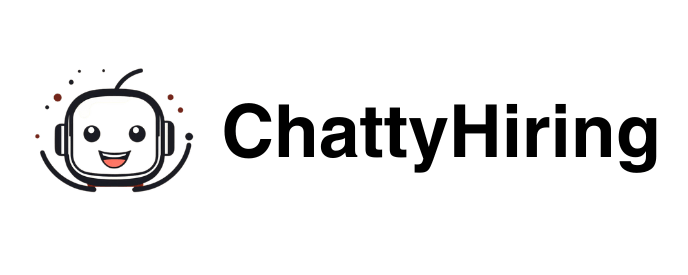The hiring process is often a complex and time-consuming endeavor for organizations, particularly in a competitive job market. Streamlining this process is essential for attracting top talent efficiently. One effective strategy is to establish a clear and concise job description that outlines the necessary qualifications, responsibilities, and expectations.
This clarity not only helps potential candidates understand the role better but also reduces the number of unqualified applicants, thereby saving time during the initial screening phase. Additionally, implementing a structured interview process can significantly enhance the efficiency of candidate evaluations.
By utilizing standardized questions and evaluation criteria, hiring managers can ensure that all candidates are assessed fairly and consistently, which ultimately leads to better hiring decisions.
Another critical aspect of streamlining the hiring process is the reduction of unnecessary steps that can lead to delays. For instance, organizations can benefit from consolidating multiple interview rounds into fewer sessions, thereby expediting the decision-making process.
Furthermore, adopting a collaborative approach among team members involved in hiring can facilitate quicker feedback and consensus on candidates.
Regular communication and updates throughout the hiring process can also keep all stakeholders informed and engaged, minimizing the risk of losing top candidates to competing offers. By focusing on these strategies, organizations can create a more efficient hiring process that not only attracts high-quality candidates but also enhances the overall candidate experience.
Key Takeaways
- Streamlining the hiring process is essential for attracting and retaining top talent.
- AI and other advanced technology for recruitment can help in reaching a wider pool of candidates and improving the efficiency of the hiring process.
- Outsourcing recruitment services can save time and resources, allowing the internal team to focus on other strategic initiatives.
- Negotiating with recruitment agencies can help in getting the best value for the services provided.
- Investing in employee training and development can improve retention rates and attract top talent looking for growth opportunities.
- Analyzing and improving recruitment metrics is crucial for identifying areas of improvement and making data-driven decisions for the hiring process.
Leveraging Technology for Recruitment
Streamlining Recruitment with Applicant Tracking Systems
Applicant Tracking Systems (ATS) are one of the most significant advancements in recruitment technology, allowing companies to manage job postings, applications, and candidate communications in one centralized platform. These systems can automate various tasks such as resume screening and scheduling interviews, which significantly reduces the administrative burden on HR teams.
Enhancing Recruitment with Artificial Intelligence and Machine Learning
Beyond ATS, organizations are increasingly utilizing artificial intelligence (AI) agents and machine learning to enhance their recruitment efforts. AI-powered chatbots can engage with candidates in real-time, answering common questions and providing information about the application process. This not only improves candidate engagement but also frees up HR personnel to focus on more strategic tasks.
Improving Hiring Decisions with Predictive Analytics
Additionally, predictive analytics can be employed to assess candidate fit based on historical data and performance metrics from previous hires. By harnessing these technological tools, organizations can streamline their recruitment processes, improve candidate quality, and ultimately make more informed hiring decisions.
Utilizing Employee Referral Programs

Employee referral programs have emerged as one of the most effective methods for sourcing high-quality candidates. These programs leverage the existing workforce’s networks to identify potential hires who may be a good fit for the organization’s culture and values. Employees are often more likely to refer individuals they believe will succeed in the company, leading to higher retention rates and job satisfaction among referred candidates.
Furthermore, referrals typically result in faster hiring times since employees can provide insights into the candidate’s skills and work ethic before they even enter the interview process. To maximize the effectiveness of employee referral programs, organizations should consider implementing incentives that encourage participation. Monetary bonuses or recognition programs can motivate employees to actively seek out potential candidates within their networks.
Additionally, creating a user-friendly referral platform where employees can easily submit referrals and track their progress can enhance engagement with the program. By fostering a culture that values employee input in the hiring process, organizations not only tap into a rich source of talent but also strengthen employee morale and commitment. (Source: SHRM)
Outsourcing Recruitment Services
| Metrics | Value |
|---|---|
| Time to fill a position | 30 days |
| Cost per hire | $6,000 |
| Quality of candidates | High |
| Client satisfaction | 90% |
Outsourcing recruitment services has become an increasingly popular strategy for organizations looking to enhance their hiring processes while reducing internal workload. Recruitment Process Outsourcing (RPO) providers specialize in managing all or part of an organization’s recruitment functions, allowing companies to focus on their core business activities. RPO providers bring expertise in sourcing candidates, conducting interviews, and managing onboarding processes, which can lead to improved efficiency and effectiveness in hiring.
One of the primary advantages of outsourcing recruitment is access to a broader talent pool. RPO providers often have established networks and resources that enable them to reach passive candidates who may not be actively seeking new opportunities. This expanded reach can be particularly beneficial for organizations in niche industries or those facing talent shortages.
Additionally, outsourcing can lead to cost savings by reducing the need for extensive internal HR teams and minimizing time-to-hire metrics. By leveraging external expertise, organizations can enhance their recruitment strategies while maintaining focus on their primary business objectives.
Implementing Cost-effective Advertising and Marketing
In an era where digital marketing dominates, implementing cost-effective advertising strategies for recruitment is crucial for attracting top talent without overspending. Social media platforms such as LinkedIn, Facebook, and Twitter offer targeted advertising options that allow organizations to reach specific demographics based on location, skills, and interests. By crafting compelling job advertisements that highlight company culture and benefits, organizations can engage potential candidates more effectively than traditional job boards.
Moreover, content marketing can play a significant role in recruitment advertising. By creating informative blog posts or videos that showcase employee experiences or company values, organizations can build a strong employer brand that resonates with prospective candidates. This approach not only attracts applicants but also fosters a sense of connection with the organization before they even apply.
Additionally, utilizing search engine optimization (SEO) techniques can enhance visibility for job postings on search engines, driving organic traffic to career pages without incurring additional costs. By adopting these cost-effective advertising strategies, organizations can maximize their recruitment efforts while minimizing expenses.
Negotiating with Recruitment Agencies

Defining Needs and Expectations
Organizations should have a clear understanding of what they want to achieve from the recruitment agency, including the type of candidates they are looking for and the skills required for each role. By providing this information, agencies can focus their search efforts and provide more suitable candidates.
Additionally, discussing fee structures upfront is essential; many agencies offer flexible pricing models based on performance or flat fees per hire.
Fee Structures and Pricing Models
Understanding the different pricing models available can help organizations make informed decisions about which agency to partner with and how to structure their agreement. This can also help to build trust and transparency in the relationship.
Building a strong partnership with recruitment agencies can also lead to better negotiation outcomes. Establishing open lines of communication fosters trust and collaboration, enabling both parties to work together more effectively toward common goals.
Building a Strong Partnership
A strong partnership is built on mutual respect, trust, and open communication. Organizations should prioritize building a relationship with their recruitment agency, providing regular feedback and updates on their needs and expectations. This can help to ensure that the agency is working effectively to meet the organization’s goals.
Organizations should provide feedback on candidate quality and agency performance regularly; this information helps agencies refine their search strategies and align more closely with organizational needs over time.
Feedback and Evaluation
Regular feedback is essential to ensuring that the recruitment agency is meeting the organization’s needs and providing high-quality candidates. By providing feedback on candidate quality and agency performance, organizations can help to refine the agency’s search strategies and improve the overall recruitment process.
Investing in Employee Training and Development
Investing in employee training and development is not only beneficial for current staff but also serves as a powerful recruitment tool for attracting new talent. Candidates today are increasingly looking for employers who prioritize professional growth opportunities. Organizations that offer comprehensive training programs demonstrate a commitment to employee development, which can significantly enhance their appeal in the job market.
This investment not only helps in retaining existing employees but also positions the organization as an attractive option for prospective hires seeking career advancement. Moreover, training programs can be tailored to address specific skill gaps within the organization or industry trends that may impact future hiring needs. For instance, offering leadership development programs can prepare employees for advancement into management roles while simultaneously creating a pipeline of qualified candidates for future openings.
Additionally, providing access to online courses or certifications allows employees to enhance their skills at their own pace while contributing to overall organizational growth. By prioritizing training and development initiatives, organizations not only improve employee satisfaction but also strengthen their recruitment efforts by showcasing a culture of continuous learning.
Analyzing and Improving Recruitment Metrics
Analyzing recruitment metrics is essential for understanding the effectiveness of hiring strategies and identifying areas for improvement. Key performance indicators (KPIs) such as time-to-fill, cost-per-hire, and candidate quality should be regularly monitored to assess the efficiency of the recruitment process. For example, if time-to-fill metrics are consistently high for certain positions, it may indicate a need to reevaluate sourcing strategies or streamline interview processes to expedite hiring.
Furthermore, gathering feedback from candidates about their experience during the recruitment process can provide valuable insights into areas that may require enhancement. Surveys or follow-up interviews with both successful hires and those who declined offers can reveal trends related to candidate perceptions of the organization’s culture or communication practices during hiring. By analyzing this data systematically, organizations can make informed decisions about adjustments needed in their recruitment strategies.
Continuous improvement based on data-driven insights not only enhances overall hiring effectiveness but also contributes to building a positive employer brand that attracts top talent over time.
Reducing recruitment costs can be achieved through the implementation of AI technology in the hiring process. One related article that discusses the benefits of using AI in recruitment is “How AI is Revolutionizing Retail Recruitment”. This article highlights how AI can streamline the hiring process, saving time and money for retail businesses. By utilizing AI generative tools, as mentioned in “7 AI Generative Tools to Assist HR Professionals”, companies can improve their recruitment strategies and reduce costs associated with traditional hiring methods. Additionally, enhancing the candidate experience through AI technology, as explored in “Improving Candidate Experience with AI”, can lead to higher retention rates and lower turnover, ultimately lowering recruitment costs in the long run.
FAQs
What are recruitment costs?
Recruitment costs refer to the expenses incurred by an organization in the process of hiring new employees. These costs can include advertising, agency fees, background checks, and onboarding expenses.
Why is it important to reduce recruitment costs?
Reducing recruitment costs is important for organizations as it can lead to significant savings. By minimizing expenses related to hiring, companies can allocate resources to other areas of the business and improve their overall financial performance.
What are some strategies to reduce recruitment costs?
Some strategies to reduce recruitment costs include utilizing social media and employee referrals for sourcing candidates, streamlining the interview process, implementing an applicant tracking system, and conducting virtual interviews to minimize travel expenses.
How can technology help in reducing recruitment costs?
Technology can help in reducing recruitment costs by automating certain aspects of the hiring process, such as resume screening and scheduling interviews. Additionally, online job boards and social media platforms can be used to reach a wider pool of candidates at a lower cost.
What are the benefits of reducing recruitment costs?
The benefits of reducing recruitment costs include improved financial performance, increased efficiency in the hiring process, and the ability to reallocate resources to other areas of the business. Additionally, it can lead to a more streamlined and effective recruitment strategy.
-

A passionate advocate for the future of HR innovation. With expertise in leveraging AI to revolutionize recruitment processes, Carlos has a clear vision: empower HR teams while creating meaningful candidate experiences.
View all posts





